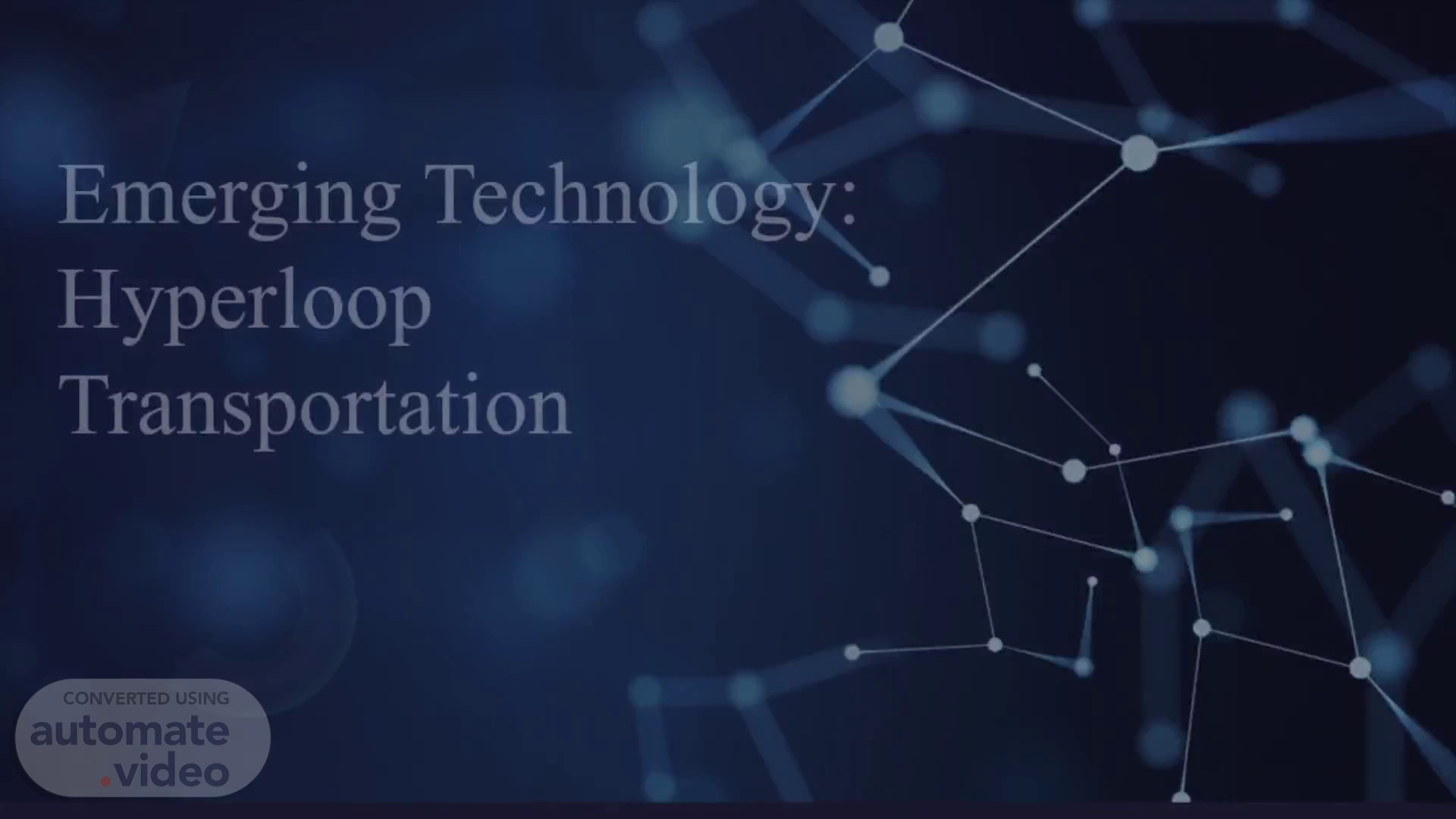
Page 1 (0s)
Data Points Digital background. Emerging Technology: Hyperloop Transportation.
Page 2 (9s)
Introduction. 2. Hyperloop transportation is an emerging technology that has the potential to revolutionize long-distance transportation. It uses pods or capsules to travel at high speeds through vacuum-sealed tubes, reducing air resistance and friction. This presentation will provide an overview of Hyperloop technology, including who is developing it, where it is being developed, and its current state of the art..
Page 3 (37s)
Developers. Virgin Hyperloop hits an important milestone the first human passenger test The Verge.
Page 4 (1m 11s)
Development Locations. 4. Hyperloop technology is being developed in research hubs around the world, including the United States, Europe, Asia, and the Middle East, showcasing a global interest and investment in this cutting-edge transportation technology. Universities, research institutions, and private companies are collaborating to accelerate the progress of Hyperloop technology, leveraging their expertise in various fields such as engineering, materials science, aerodynamics, and transportation systems. These collaborative efforts aim to overcome technical challenges, optimize the performance of Hyperloop systems, and expedite the timeline for commercialization, making this technology widely available in the near future. This collaborative approach also helps in addressing regulatory and safety considerations, ensuring that the development and deployment of Hyperloop technology align with industry standards and best practices, enhancing its potential positive implications for the future of transportation..
Page 5 (1m 50s)
State of the Art. 5. Currently, Hyperloop technology is still in the early stages of development. Successful test runs of prototype pods in vacuum-sealed tubes have been conducted, but there are challenges to overcome, such as safety regulations, infrastructure development, and scalability. Early-stage development: Hyperloop technology is still in the nascent stages of development, with ongoing research, design, and testing efforts being conducted by private companies, research institutions, and startups. Prototype testing: Successful test runs of prototype pods in vacuum-sealed tubes have been conducted, showcasing the feasibility of the technology and its potential for high-speed transportation. Challenges to overcome: However, there are significant challenges that need to be addressed, including safety regulations, infrastructure development, and scalability of the technology to accommodate long-distance routes and large passenger volumes. Multi-faceted hurdles: These challenges require collaborative efforts among stakeholders to ensure that safety standards are met, adequate infrastructure is in place, and the technology can be scaled up efficiently and economically, for widespread commercialization and usage..